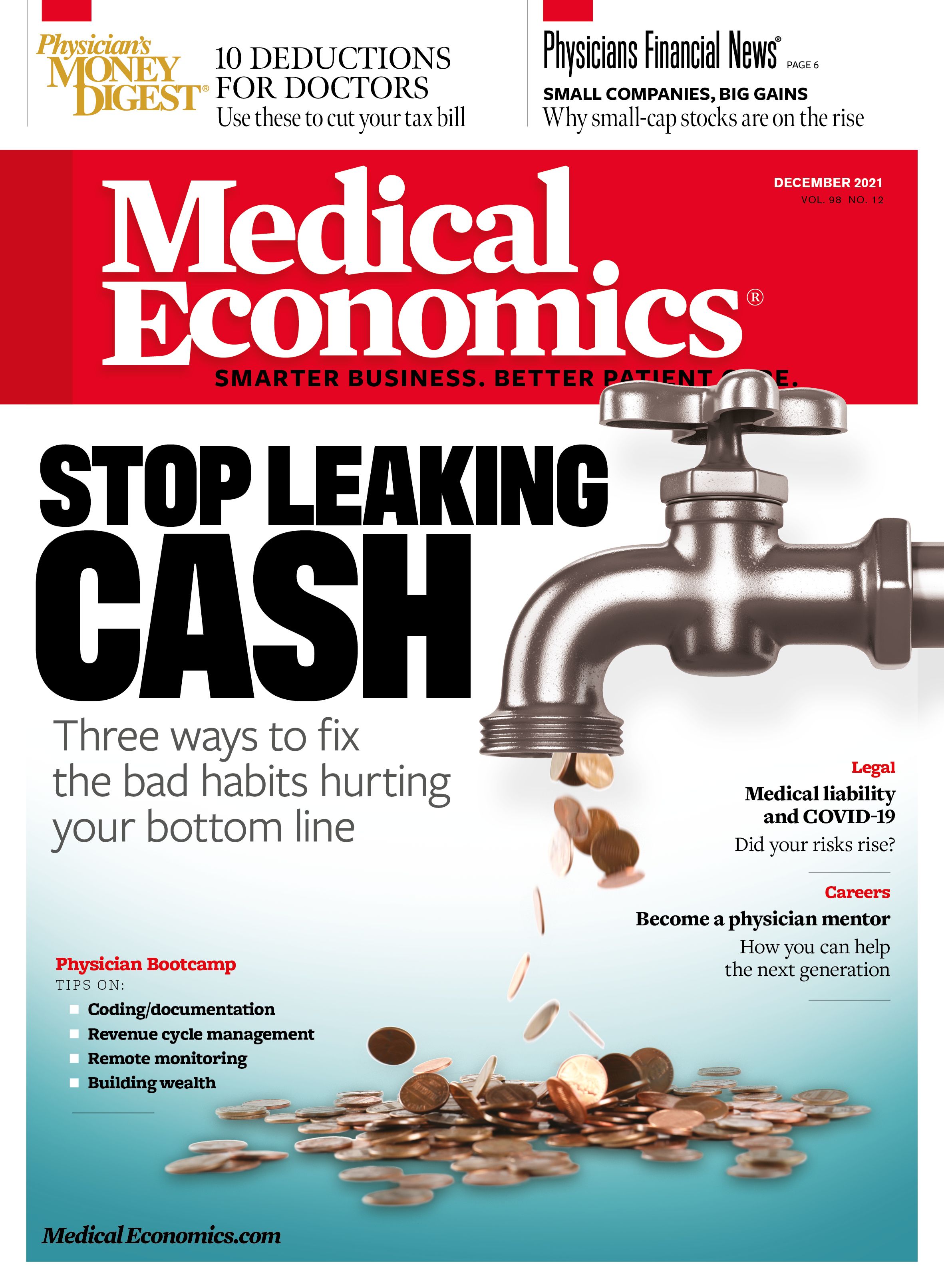Publication
Article
Medical Economics Journal
Small company stocks appear poised for growth
Author(s):
After lagging large company stocks in recent years, small company stocks — currently the outsiders of the equity market — appear to be mustering to rise.
After lagging large company stocks in recent years, small company stocks — currently the outsiders of the equity market — appear to be mustering to rise.
Various indicators seem to presage an ascent. The signals are perhaps most sanguine for small capitalization stocks in the value category — out-of-favor companies trading below their actual value, based on fundamental characteristics.
Being down makes small caps a more likely bet than large caps as time goes by, as the pendulum of investment inflows swings between opposing equity types.
After shooting up sharply in the fall of 2020, the Russell 2000 Index of small-cap companies has remained nearly flat in a trading range most of this year. The major dramatic question now is: Was the index’s performance a year ago just a tease, or will it resume rising soon?
As one equity category’s pain is often another’s pleasure in the competition for capital, some of the answer lies in recent negative signals from large caps.
As of September, about half the stocks in the S&P 500 large-cap index had fallen 10% or more from their 52-week highs. This decline, now overshadowed by a mid-October spurt, probably wasn’t noticed by many investors because the index’s performance is routinely distorted by the weightings of big tech growth companies. Because of these giants’ performance, the index was down less than many of its members.
The trend of weakening large-cap companies continued to the point where Morgan Stanley noted in October that “88% of S&P 500 members have experienced at least a 10% drawdown,” though on a “closing price basis, the index (had) only corrected by 5%.”
Meanwhile, there have been healthy stirrings from small caps, as represented by the S&P 600 index of small-cap stocks. As of August, this index’s one-year forward price-earnings ratio had been improving relative to that of the S&P 500.
This number was well under the 25-year average. This means that more than at any time in over a quarter century, investors have recently been getting more earnings in return for the prices they’re paying for small-cap stocks. They’re historically cheap relative to large caps, and more likely to rise. Along with these quantitative signals, small caps may have tailwinds from various economic trends:
Most small companies are entirely domestic, so they stand to gain disproportionately from the rapid economic growth now underway as the nation continues to recover from the
COVID-19-induced recession. These companies make stuff people are buying, and consumer confidence is currently strong. Contrary to suggestions of economic weakness, stemming from the current media obsession over supply chain disruption, economic growth is actually strong.
Being exclusively domestically oriented has inherent advantages, as small companies are most likely to benefit from forces of reverse globalization. Some analysts see globalization as reversing to some extent, giving way to a new order of three basic economic zones that are more self-contained. This may lead to more isolated, less globally dependent business environments. Recent examples of reverse globalization include Ford Motor Company’s recent announcement of a
$11.4 billion manufacturing facility in Kentucky (including an electric vehicle [EV] battery plant) and Intel Corp. breaking ground in Arizona on two microchip manufacturing plants costing
$20 billion. This in a world where vehicles are often built in multiple countries: EV batteries are a global product (many are made in China), and microchip plants have typically been located in Asian countries.
There’s increasing corporate and public support for this manufacturing repatriation amid concerns about China’s increasingly troubled economy.
Small-cap value stocks have a beneficial past. Historically, in the first two years of recovery from recession, value stocks have usually far outperformed growth stocks.Already, some small-cap value stocks are outperforming the broader category of small caps. Exchange-traded small-cap value funds, such as iShares Russell 2000 Value ETF (IWN) and Invesco S&P SmallCap Value with Momentum ETF (XSVM), have been running above the Russell 2000 small-cap index this fall.
If the various indications pointing to a near-term rise in small-cap stocks don’t prove prescient, many long-term investors who act on them moderately may be doing nothing more disadvantageous than adding much needed balance to portfolios that were probably lopsided with large-cap stocks. And those seeking small-cap exposure with downside protection might consider small-cap, options-based exchange-traded funds.
Thus diversified, these investors will be ready for the time when — not if — small caps rise. The pendulum always swings back.
David S. Gilreath, CFP, is a 40-year veteran of the financial services industry. He is a partner and chief investment officer of Sheaff Brock Investment Advisors LLC, a portfolio management company for individual investors, and Innovative Portfolios LLC, an institutional money management firm. Based in Indianapolis, the firms manage approximately
$1.4 billion in assets nationwide.






